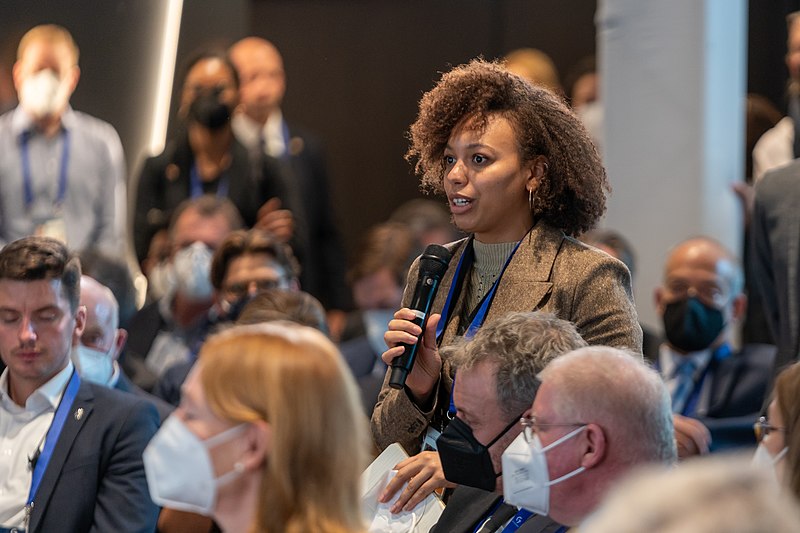Question and Answer Period

While first impressions are incredibly important—and it is the speaker’s job to maintain these impressions throughout the speech via effective delivery methods—it is also vitally important to maintain a positive final impression as well. This can be accomplished through effective moderation of a Q&A period. As the conclusion wraps up with the final clincher, prepare for the audience to applaud. Absorb the applause, but don’t rush the audience by interrupting their ovation, however uncomfortable it may feel to receive public praise.
As soon as the applause dies down a bit and before leaving the podium to remove any visual aids setup, announce the opportunity to field audience questions. As a general rule, try not to allow the Q&A to run any longer than about 25% of the total time allotted for the speech. For an hour-long presentation, allow up to 15 minutes for questions. For a 10-minute speech, allow up to two minutes. After announcing the Q&A, it becomes a matter of calling on people in the order they raised their hands. However, with some topics, it may take the audience a while to think of questions, but show patience.
If nobody raises a hand, don’t take this as an indicator that the speech performed poorly; it could mean the audience simply needs a moment to digest the information. Wait for at least 10 seconds before deciding to end without a single question.
When fielding questions, answer fully, yet briefly. This is not the time to dive headfirst into a whole different speech topic. Maintain eye contact with the question-asker while he or she asks the question, but when answering, return to making eye contact with the entire audience.
Note to Self
Speakers who try to bluff their way through a Q&A run the risk of having an audience member who knows the correct answer, in which case, her or his hand will likely immediately go up to correct the speaker, which will hurt credibility.
If someone asks a “gotcha question” designed to entrap or directly points out misinformation from the speech, avoid getting defensive with that audience member. Instead, acknowledge the possibility, be humble, and promise to look further into the matter later. If certain questions end up too far off-topic, it is perfectly acceptable to decline to answer. Consider offering to meet with that audience member afterward to discuss the question.
As the time comes to a close, end the Q&A session even if the audience has further questions. Respect the audience’s time, as well as other speakers. Politely announce the end of the Q&A and thank the audience for their time and attention.

